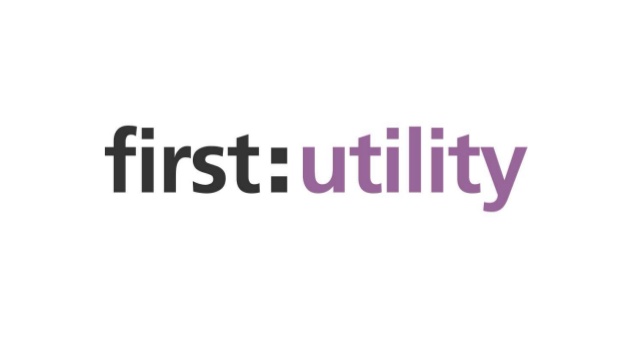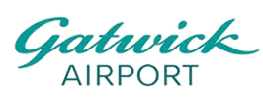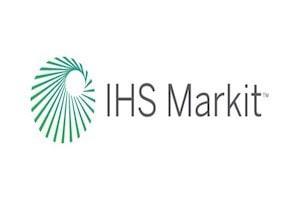You Ask, We Answer: What is the True Total Cost of Ownership (TCO) of GitLab?
Here at Sirius, we often get asked, "What is the true cost of GitLab?". This is a very good question, and one that deserves a clear, honest answer. We understand the need to know the true financial implications of any technology choice, as it's a decision a business will have to live with for years, affecting scalability and operational costs.
We want to be upfront: While the GitLab platform offers a comprehensive DevSecOps solution, and its Free tier provides core Source Code Management (SCM) and Continuous Integration/Continuous Delivery (CI/CD), the truth is, relying solely on the "free" license can actually mask significant hidden operational costs. This is particularly true when attempting to maintain high availability or when mandated security requirements necessitate higher licensing tiers. This article will honestly explain the factors that drive the Total Cost of Ownership (TCO) of GitLab up or down, detailing licensing tiers, variable resource consumption, and the critical financial delta created by labor costs. We aim to be fiercely transparent, allowing you to make the most informed decision possible.
Section 1: GitLab’s Licensing Architecture and Cost Variables
The commercial model for GitLab aligns cost directly with feature consumption across critical vectors: scale, productivity, security, and compliance. Organizations must understand how features segment across the three main tiers: Free, Premium, and Ultimate. To overcome the common objection that "prices vary," we must explain why they vary and provide realistic ranges and contexts.
1.1. Core Tier Pricing and Feature Segmentation
GitLab is offered across the Free, Premium, and Ultimate tiers, each tailored to different organizational needs.
| Plan Tier | Annual Per User Cost | Primary Focus | Compute Minutes/Month | Critical Security Feature |
|---|---|---|---|---|
| Free | $0 | Basic SCM & CI/CD | 400 | N/A |
| Premium | $348 ($29/mo) | Productivity & Scalability | 10,000 | Priority Support, Protected Branches |
| Ultimate | Contact Sales | Security, Compliance, Portfolio | 50,000 | SAST, DAST, Vulnerability Mgmt |
Premium is positioned for scaling organizations, priced at $29 per user per month (billed annually). It provides key features like Merge Requests Approval, Code Ownership, and 10,000 compute minutes.
Ultimate targets large enterprises with mandatory security and compliance requirements. Pricing is only available through consultation with sales, reflecting highly customized contracts.
1.2. Justifying the Ultimate Tier Cost (The Value Proposition)
The move to the Ultimate tier is largely justified by mandatory regulatory adherence and sophisticated risk reduction, not just enhanced efficiency. Ultimate bundles integrated DevSecOps capabilities, including Static Application Security Testing (SAST), Dynamic Application Security Testing (DAST), and advanced Compliance and Governance tools.
Organizations evaluating Ultimate must compare the subscription fee against the alternative TCO of acquiring, integrating, maintaining, and managing separate, best-of-breed security scanning and governance tools. The expense represents a mandatory cost of mitigating systemic risks associated with legal and regulatory exposure.
1.3. Emerging Variable Costs: AI Add-ons
Beyond the licensing tiers, organizations must factor in paid add-ons, particularly for AI capabilities.
The AI component, GitLab Duo Pro, is priced at an additional $19 per user per month (billed annually) for Premium and Ultimate customers.
Adding the Duo Pro add-on to the standard Premium cost of $29 per user per month increases the effective monthly price for an "AI-enabled Premium" subscription to $48 per user per month. This represents a 65.5% increase over the base Premium subscription cost.
This stratification implies that AI is viewed as a high-value, high-margin service distinct from routine DevSecOps operations.
Section 2: Total Cost of Ownership (TCO) Modeling: Self-Managed vs. SaaS
A pricing article must move beyond license fees to address the Total Cost of Ownership (TCO), capturing the visible and hidden costs that are frequently overlooked. Failure to account for post-purchase costs in cloud solutions risks overspending by up to 70%.
2.1. Defining the TCO Components
The TCO framework identifies three major financial areas over the product's lifecycle:
- Direct Costs: Licensing fees and cloud infrastructure provisioning.
- Indirect Costs: Maintenance, internal security management, system updates, labor, and training.
- Hidden Costs: The financial impact of downtime or service limits.
2.2. The Critical Labor vs. Infrastructure Asymmetry
Organizations adopting the Self-Managed deployment option assume full responsibility for managing all infrastructure aspects—hardware, operating systems, networking, and the GitLab application itself. Running a high-performance application like GitLab in a production environment is inherently complex. For enterprises lacking deep expertise in high-availability Kubernetes or sophisticated database management, the massive administrative overhead and subsequent labor costs often negate any potential savings from independent hosting.
To illustrate this financial reality, we compare the minimum infrastructure cost against the internal labor cost for a self-managed instance supporting approximately 500 users:
- Minimum Annual Infrastructure Cost: A non-High-Availability (non-HA) single-node setup requires an estimated minimum monthly infrastructure cost of approximately $207, resulting in an estimated annual cost of ~$2,484 (based on server, database, and storage costs). Achieving enterprise-grade HA resilience drastically increases this complexity and infrastructure cost, potentially ballooning expenses to "thousands of dollars per month".
- Median Annual Labor Cost: The median annual salary for a dedicated GitLab Administrator in the United States is approximately $77,950.
The comparison demonstrates that the labor cost is the overwhelming component of self-managed TCO, exceeding minimum infrastructure expenses by more than 30 times. Therefore, strategic procurement must prioritize labor efficiency above marginal infrastructure cost reduction.
2.3. TCO Synthesis: SaaS vs. Self-Managed
The analysis reveals a substantial TCO risk associated with self-management.
| Cost Component (500 Premium Users) | GitLab SaaS (Annual) | Self-Managed (Minimum Annual TCO) |
|---|---|---|
| Direct Licensing Cost | $174,000 | $174,000 |
| Minimum Infrastructure | $0 (Included) | ~$2,484 (Non-HA) |
| Administrator Labor | $0 (Managed by GitLab) | $77,950 (Median FTE) |
| Minimum Estimated TCO | $174,000 | $255,934+ |
The minimum estimated annual TCO for a single-administrator, non-HA self-managed instance is over $81,934 higher than the pure SaaS licensing cost. The financial predictability and operational simplicity of the SaaS model provide a superior economic solution unless the organization has existing, underutilized administrative personnel who can reliably manage the infrastructure.
Section 3: Cost of Expertise and Strategic Support
External expertise and professional services represent a necessary cost, particularly in large migrations, used to mitigate the TCO risks associated with inadequate internal expertise.
Consulting Hourly Rates (Ranges): DevOps consulting rates exhibit high variability based on location and seniority. Rates start from $50 per hour and can escalate significantly. In high-cost regions (North America, Western Europe), average rates range from $100 to $175 per hour, with senior independent consultants commanding $175 to $300 per hour, or more.
Velocity vs. Rate: While a senior consultant may have a higher hourly rate, they can design and implement complex architectures significantly faster and with fewer errors than lower-rate consultants. A fiscally prudent strategy involves utilizing high-rate, senior consultants for crucial upfront strategic planning and architecture design, delegating routine tasks to lower-rate staff or managed service providers.
Training Costs: Organizations must budget for training and certification. The cost for individual certification exams, such as the GitLab CI/CD certification, is $150 USD per registration.
Section 4: Strategic Recommendations for Cost Mitigation
Transparency about pricing and potential problems attracts prospects looking for value and solutions, not just the cheapest option. The key to optimizing GitLab TCO is leveraging external support to reduce the greatest risk: internal labor overhead.
Prioritize Managed Services to Control Labor Costs: For organizations committed to the self-managed path, internal labor is the greatest financial risk. Shifting the operational burden of patching, upgrades, and HA management from internal, salaried administrators to external Managed Service Providers (MSPs) is a high-return strategy. This action converts a volatile, high-risk labor cost (TCO) into a predictable operational expense (OPEX), significantly stabilizing the long-term financial model.
Budget for Dynamic Configuration: If the organization operates in a high-velocity container environment (e.g., Kubernetes), Premium licensing is generally required. The operational agility features necessary for dynamic upstream reconfiguration are commercialized and restricted to the NGINX Plus license (a dependency mentioned in related materials). Organizations must budget for this essential stability investment, or they face inherent operational instability from the necessity of constant configuration reloads.
Use Professional Services for Optimization: Once the platform is stable, utilize GitLab Professional Services (PS) for a Platform Adoption Maturity Assessment. This vendor-specific engagement ensures the substantial investment in Premium or Ultimate licensing is fully leveraged by providing a prioritized roadmap tied to business value outcomes.
















































